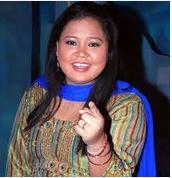Date of formation: Faridkot District was carved out of Bathinda District on 7th August 1972 and in 1995 it again saw a split and Muktsar District and Moga District were carved out of it.
Area: 1458 square kilometers
Density of population: 424 people per square kilometer
Literacy Rate: 70.60 % - Male: 75.90 %, Female: 64.80 %
Male Female Ratio: 1000:889
Boundaries of Faridkot District
North West: Firozpur District, Punjab
North East: Moga District and Ludhiana District, Punjab
South: Bathinda District and Sangrur District, Punjab
Faridkot District Average Rainfall: 433 mm
Faridkot District Maximum Temperature in Summer: 47 deg C
Faridkot District Minimum Temperature in Winter: 4.5 deg C
FARIDKOT DISTRICT MAP

Rivers: Golewala
Tehsils: Faridkot, Jaitu
Development Blocks: Faridkot, Kotkapura
Assembly Constituencies: Faridkot, Kotkapura, Jaitu
Faridkot District Nearby Attractions
1. State Civil Secretariat
2. District Administrative Complex
3. Darbar Ganj
4. Qila Mubarak
5. Raj Mahal
6. Darbar Ganj
7. Gurdwara Tilla Baba Farid
8. Gurdwara Godari Sahib
9. Gurdwara Guru Ki Dhab
10. Gurdwara Tibbi Sahib
11. Gurdwara Godavarisar Patshahi Dasvin Village Dillwan Kalan
12. Rajasthan and Sirhind Canals
13. Fairy Cottage
14. Check Tower
Faridkot District Facts: The only medical university in North India named Baba Farid Medical University is located in this district. The majority of people belong to Jatt community.
Major Agricultural Products: Paddy, American cotton, wheat, gram, barley
Major Industries: Punjab Agro Industries, Janshakti Industries, Shiv Shakti Jute Industries
Village Industries: Pottery, bee keeping, fibre, blacksmithy, carpentry, fireworks, cottage match, manufacturing gums and resins
What is Faridkot District Famous For: Its biggest cotton market
Famous People From Faridkot District: Sukhbir Singh Badal, Jarnail Singh Bhindrawale, Kuldip Singh Brar, Gurdas Maan, Saini Sisters
Last Updated : Friday Jun 15 , 2012










.jpeg)
